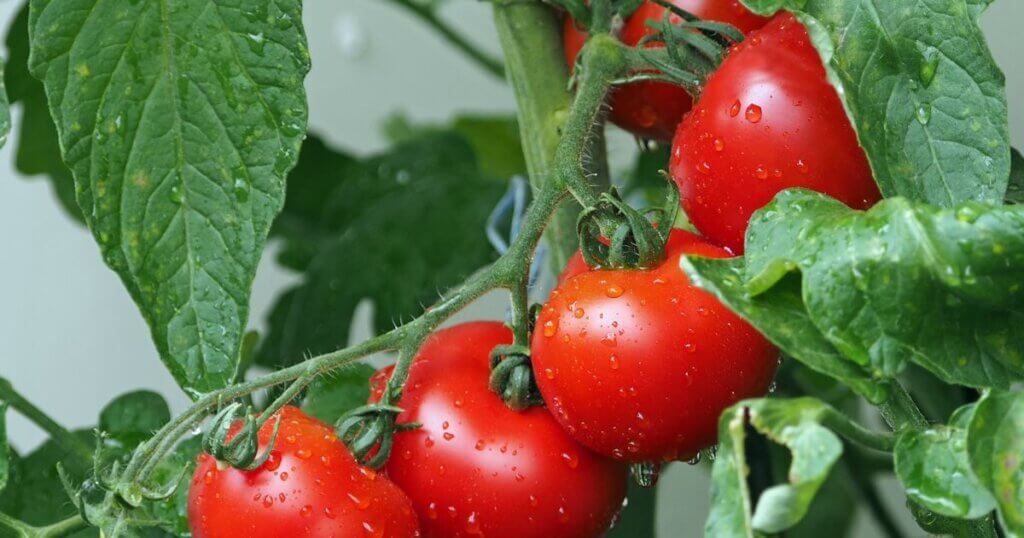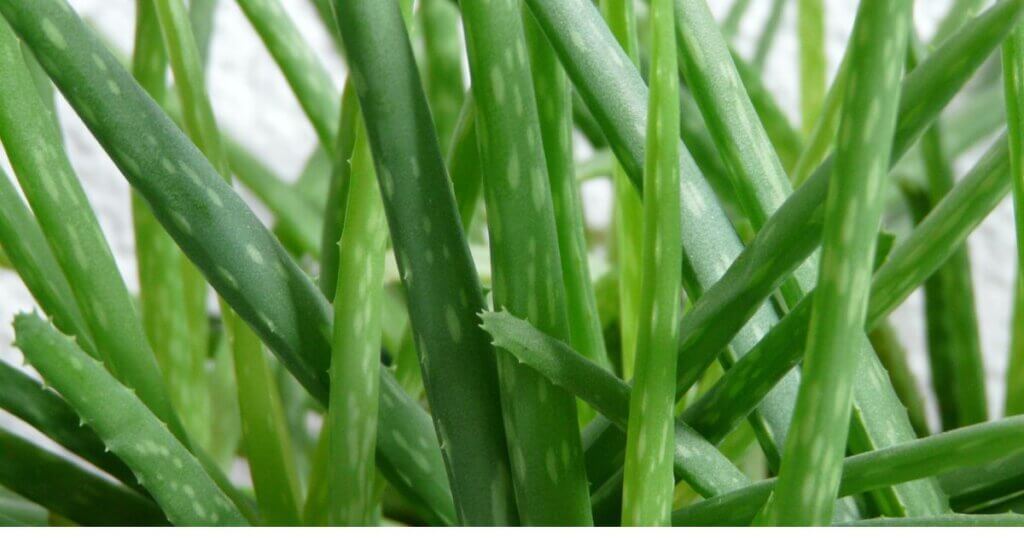The Complete Guide to Growing Basil Indoors: Achieve Fresh, Flavorful Herbs Year-Round

Indoor Farming Hub is an Amazon Associate and earns from qualifying purchases.
Table of Contents
Basil is one of the most versatile and fragrant herbs that you can grow at home. The good news? Growing basil indoors is easier than ever, and with the right guidance, you can enjoy a constant supply of fresh, flavorful basil year-round. In this guide, we’ll walk you through everything you need to know about growing basil indoors—from choosing the best varieties to harvesting, storing, and even cooking with this delightful herb. Ready to fill your home with the sweet aroma of basil? Let’s dive in!
Choosing the Best Basil Varieties for Indoor Growing
When it comes to growing basil indoors, not all basil varieties are created equal. Some types adapt better to indoor conditions, while others thrive in outdoor gardens. Let’s take a look at the best basil varieties for growing indoors and why they make an ideal choice for your indoor herb garden.
Sweet Basil: The Most Popular Choice
Sweet basil is the classic variety most people recognize and love. It’s known for its bright green, fragrant leaves and slightly sweet, peppery flavor that complements a wide range of dishes. Whether you’re whipping up a homemade pesto, topping a Margherita pizza, or flavoring a fresh salad, sweet basil is a kitchen essential. Its easygoing nature and versatility make it a must-have for any indoor herb garden.
Thai Basil: A Touch of Spice for Your Kitchen
If you enjoy cooking Asian dishes, Thai basil will bring an exciting new flavor to your meals. This variety stands out with its purple stems, smaller leaves, and a bold, anise-like taste that adds depth to stir-fries, curries, and noodle recipes. Thai basil thrives indoors with the same care as sweet basil, needing good light, warmth, and regular watering. Its slightly spicy flavor profile makes it a standout addition to your indoor herb collection.
Genovese Basil: The Classic Italian Herb
For lovers of authentic Italian cuisine, Genovese basil is an excellent variety to grow indoors. It features large, tender, deep green leaves that are highly aromatic and perfect for making classic pesto or seasoning pasta dishes. Genovese basil requires plenty of sunlight and well-draining soil to truly thrive indoors. With the right care, it produces lush, flavorful leaves that will elevate your cooking to a new level.
Why Growing Basil Indoors is Easier Than You Think
Many people believe that growing herbs indoors is challenging, but that’s not the case with basil. Indoor environments offer greater control over temperature, humidity, and light, making it easier to keep your basil healthy. Plus, having fresh herbs at your fingertips year-round is a perk that can elevate your cooking to new heights.
Essential Equipment for Growing Basil Indoors
Before you get started, it’s important to have the right tools and equipment to give your indoor basil the best chance of thriving.
Best Pots and Containers for Indoor Basil
When selecting a pot for indoor basil, make sure it has drainage holes to prevent water from accumulating at the bottom of the pot. Basil plants are sensitive to excess moisture around their roots, so good drainage is essential to keep them healthy and prevent root rot. Small to medium-sized pots are ideal for basil, as the plant has a relatively shallow root system that doesn’t require deep containers. Additionally, using a pot with a diameter of about 6-8 inches provides ample space for growth without overwhelming the plant.
For an easier way to manage watering and drainage, consider using self-watering pots like these Self-Watering Planters on Amazon. They help maintain consistent soil moisture without waterlogging your basil roots.
Potting Soil: What Basil Needs to Thrive
Basil thrives in well-draining soil that is rich in organic matter to support healthy root development. For the best results, choose a potting mix designed specifically for herbs or vegetables, as these blends provide the right balance of nutrients and structure. Basil prefers soil that retains some moisture while allowing excess water to drain away, preventing the roots from sitting in water. By using the right soil, you ensure that your basil has the foundation it needs to grow vigorously indoors.
For best results, use a premium potting mix like FoxFarm’s Ocean Forest Organic Potting Soil, which provides the perfect blend of nutrients and drainage for thriving basil plants.
The Role of Grow Lights for Basil
If your indoor space doesn’t receive enough natural sunlight, grow lights are an excellent solution to ensure your basil thrives. Basil needs a minimum of 6-8 hours of light per day to stay healthy and produce vibrant leaves. In low-light environments, grow lights provide a reliable way to mimic natural sunlight and offer the full spectrum of light basil requires. LED grow lights are particularly beneficial for indoor herb gardens, as they are energy-efficient and offer the perfect light wavelengths for basil’s growthHow to Plant Basil Indoors Step by Step
If your indoor space lacks enough sunlight, a full-spectrum grow light like the GE BR30 LED Grow Light Bulb ensures your basil gets the light it needs to grow strong and flavorful.
Germinating Basil Seeds Indoors
To start growing basil from seeds, plant them in a seed tray or small pots, ensuring each seed is placed about 1/4 inch deep in the soil. Keep the soil consistently moist but not waterlogged, as basil seeds require moisture to germinate but can be sensitive to excess water. Within 5-10 days, you should begin to see tiny green sprouts pushing through the surface, signalling that the seeds are germinating successfully. Ensure the trays or pots are placed in a warm, sunny spot to help the seeds sprout and grow quickly.
Transplanting Basil Seedlings for Indoor Gardens
Once your basil seedlings have reached a few inches in height and developed several leaves, it’s time to transplant them into larger containers for better growth. Choose pots with drainage holes to prevent water from accumulating at the bottom and potentially damaging the roots. Fill the pots with a nutrient-rich potting mix, providing the basil with the essential nutrients it needs to thrive indoors. When transplanting, carefully place the seedlings in the new pot, ensuring their roots are covered with soil, and water them gently to help them settle into their new home.
Ideal Indoor Conditions for Growing Basil
Optimal Temperature for Basil Growth
Basil thrives best in warm conditions, so maintaining a daytime temperature between 70-80°F is ideal for healthy growth. Try to keep your basil away from drafts, air conditioning vents, or cold windows, as sudden temperature drops can stress the plant. Cooler temperatures, especially below 50°F, can cause basil to wilt or slow its growth significantly. A consistently warm environment will help your basil produce lush, flavorful leaves.
Managing Humidity Levels Indoors
Indoor environments, particularly during winter months, can become quite dry and challenging for basil plants. Since basil prefers a slightly humid atmosphere, it’s helpful to place a small humidifier nearby or mist the leaves lightly with water. Grouping plants together can also naturally raise humidity levels around them. Maintaining proper humidity keeps basil leaves from drying out and supports robust, healthy growth.
To maintain ideal humidity around your basil plants, try a compact humidifier like the Pure Enrichment MistAire Ultrasonic Cool Mist Humidifier. It’s small, quiet, and great for keeping herbs happy indoors.
Air Circulation: How It Impacts Your Indoor Basil
Good air circulation is crucial for keeping indoor basil plants healthy and preventing issues like fungal diseases. Make sure your basil plants have enough space around them so that air can flow freely between the leaves. If your indoor area feels stuffy, consider using a small fan on a low setting to gently move the air. Proper airflow not only strengthens the plants but also helps reduce the risk of pests and mold.
Watering Basil Indoors: Tips for Success
Basil thrives with regular watering, but it’s important to avoid overdoing it. Water your basil when the top inch of soil feels dry, and always water thoroughly until excess drains out the bottom. Good drainage is essential—use pots with drainage holes and consider adding a layer of pebbles at the bottom to help excess water escape easily. This prevents root rot, keeps the soil from becoming waterlogged, and ensures your basil stays healthy, vibrant, and ready for harvest.
Feeding Your Indoor Basil: Fertilizer Essentials
Organic fertilizers are usually best for indoor basil, providing a slow, steady release of nutrients. Fish emulsion or compost tea are great options and should be applied every 4–6 weeks. If your basil shows slow growth or pale leaves, it’s a sign it needs feeding, but be careful not to over-fertilize, as this can lead to weak, leggy plants.
Pruning and Harvesting Basil Indoors
Pruning basil is key to keeping plants bushy—pinch off the top leaves once the plant has four sets of true leaves to encourage outward growth. Harvest basil in the morning when leaves are most flavorful, picking regularly but never more than one-third of the plant at a time. After harvesting, use basil fresh or preserve it by drying, freezing, or making pesto. For easy freezing, place whole basil leaves in an ice cube tray with olive oil.
Common Problems When Growing Basil Indoors
Even with the best care, basil plants can face a few challenges when grown indoors. Understanding these common problems and how to address them will keep your plants healthy and thriving. Let’s dive into some issues you might encounter and practical solutions to overcome them.
Indoor Pests and How to Get Rid of Them
Indoor basil plants aren’t completely safe from pests like aphids, spider mites, and whiteflies. These insects suck sap from leaves, causing yellowing, curling, and stunted growth. Regularly inspect your basil, especially under the leaves, where pests like to hide. At the first sign of infestation, use insecticidal soap, diluted neem oil, or physically remove pests with water or a damp cloth.
Basil Leaves Turning Yellow: Causes and Solutions
Yellow leaves on basil can be natural aging, but widespread yellowing often points to deeper issues. Overwatering and poor drainage suffocate roots, while nutrient deficiencies starve the plant. Always let the top inch of soil dry before watering and feed your basil with a balanced fertilizer every 4–6 weeks. Consistent care with proper light, water, and temperature will help your plant regain its vibrant green color.
Preventing Fungal Diseases in Indoor Basil
Fungal diseases like powdery mildew and root rot can thrive in humid, poorly ventilated spaces. Promote airflow with a fan or by spacing plants apart, and avoid overhead watering to keep leaves dry. Monitor humidity levels and use sterile soil when planting or repotting. If you spot fungal signs, remove affected parts immediately and treat with an organic fungicide to save your plant.
Wrap-Up
By staying proactive with pest checks, careful watering, and proper air circulation, you can prevent most common basil problems indoors. Healthy basil plants reward your efforts with lush, flavorful leaves for cooking. A little regular attention keeps pests, yellowing, and fungal diseases from taking over. In return, you’ll enjoy a thriving, aromatic herb garden year-round!
How to Use Your Fresh Indoor Basil in Cooking
Fresh basil is a versatile herb that can transform everyday meals into extraordinary culinary creations. Whether you’re cooking a quick dinner or hosting a special gathering, basil is the perfect ingredient to elevate your dishes. Its bright, aromatic flavor enhances a wide range of recipes. Let’s explore some standout ways to use your indoor basil harvest.
Basil Pesto Recipe: A Kitchen Staple
Homemade basil pesto delivers a rich, herby flavor that far surpasses store-bought versions. To make it, blend two cups of fresh basil, two to three garlic cloves, a handful of Parmesan cheese, 1/4 cup of pine nuts, and a good drizzle of olive oil. Blend until smooth, adding more olive oil as needed. Pesto isn’t just for pasta—it’s great on sandwiches, pizza, soups, and roasted vegetables, and it can be frozen in ice cube trays for later use.
Basil-Infused Olive Oil: Liquid Gold
Basil-infused olive oil is a luxurious way to preserve basil’s vibrant flavor. Lightly bruise a handful of fresh basil leaves, combine them with high-quality olive oil in a sterilized jar, and let it steep for two to three weeks. Shake the jar gently every few days, then strain out the leaves before using. This aromatic oil is perfect for drizzling on bread, salads, grilled meats, or giving as a homemade gift.
Fresh Basil in Everyday Cooking
Fresh basil adds a burst of flavor to countless dishes beyond traditional Italian recipes. Tear the leaves to garnish soups, toss into salads, or layer in sandwiches for a fragrant touch. It pairs especially well with tomatoes, garlic, and cheese in dishes like bruschetta, tomato-basil soup, and Margherita pizza. For a creative twist, add chopped basil to desserts like ice creams, sorbets, or fruit salads, where it complements sweet flavors beautifully.
Conclusion
Growing basil indoors is a rewarding and enjoyable experience that ensures a constant supply of fresh, aromatic herbs for your kitchen throughout the year. By providing the right conditions—such as proper lighting, temperature, and watering—you can help your basil plants flourish indoors. A thriving basil garden not only adds a vibrant touch of greenery to your living space but also enhances the overall atmosphere of your home. With each harvest, you’ll enjoy the satisfaction of adding homegrown flavor to your meals.
Want a complete starter kit for growing basil indoors? The AeroGarden Harvest Indoor Garden Kit makes it simple with built-in grow lights and pre-seeded pods.
Growing Basil Indoors – FAQs
1. Can I grow basil indoors without natural sunlight?
Yes, you can grow basil indoors without natural sunlight by using grow lights. LED grow lights with a full spectrum are ideal for mimicking sunlight and promoting healthy growth. Position the light about 6-12 inches above the basil and keep it on for 12-16 hours a day to ensure proper photosynthesis.
2. How often should I prune my indoor basil plant?
Prune your basil regularly to encourage bushy growth and prevent the plant from becoming leggy. Aim to pinch off the top two sets of leaves every two to three weeks, or whenever the plant has grown about 6 inches tall. Always leave at least two sets of leaves on each stem to support regrowth.
3. What is the best temperature for growing basil indoors?
Basil thrives in temperatures between 70°F and 80°F (21°C to 27°C) during the day and no lower than 50°F (10°C) at night. Avoid placing your basil near cold drafts or heating vents, as extreme fluctuations can stress the plant.
4. Can I propagate basil from cuttings?
Absolutely! Basil is one of the easiest herbs to propagate. Snip a 4-6 inch cutting from a healthy plant just below a leaf node, remove the lower leaves, and place it in a glass of water. Keep the glass in a bright spot, and you’ll notice roots forming within 1-2 weeks. Once the roots are about 2 inches long, you can transplant the cutting into soil.
5. Why does my indoor basil flower, and what should I do about it?
Basil flowers when it begins to mature or if it’s stressed. While flowering is natural, it diverts energy away from leaf production, which can impact flavor. Pinch off the flower buds as soon as you see them to encourage continued leaf growth. If flowering persists, review the plant’s care routine to ensure it isn’t stressed by factors like inconsistent watering or inadequate lighting.
Other Resources Related To Growing Basil Indoors
- How To Grow Basil Indoors – For Fresh Year-Round Flavor
- Tips for Growing Delicious Basil Indoors Year-Round
- How to Grow Basil Indoors to Enjoy All Year Long
- How To Grow Basil Indoors 🌿 and Elevate Your Home Cooking
- Growing Basil Plants: How to Plant, Care for & Harvest Basil
Other Interesting Growing Basil Indoors









